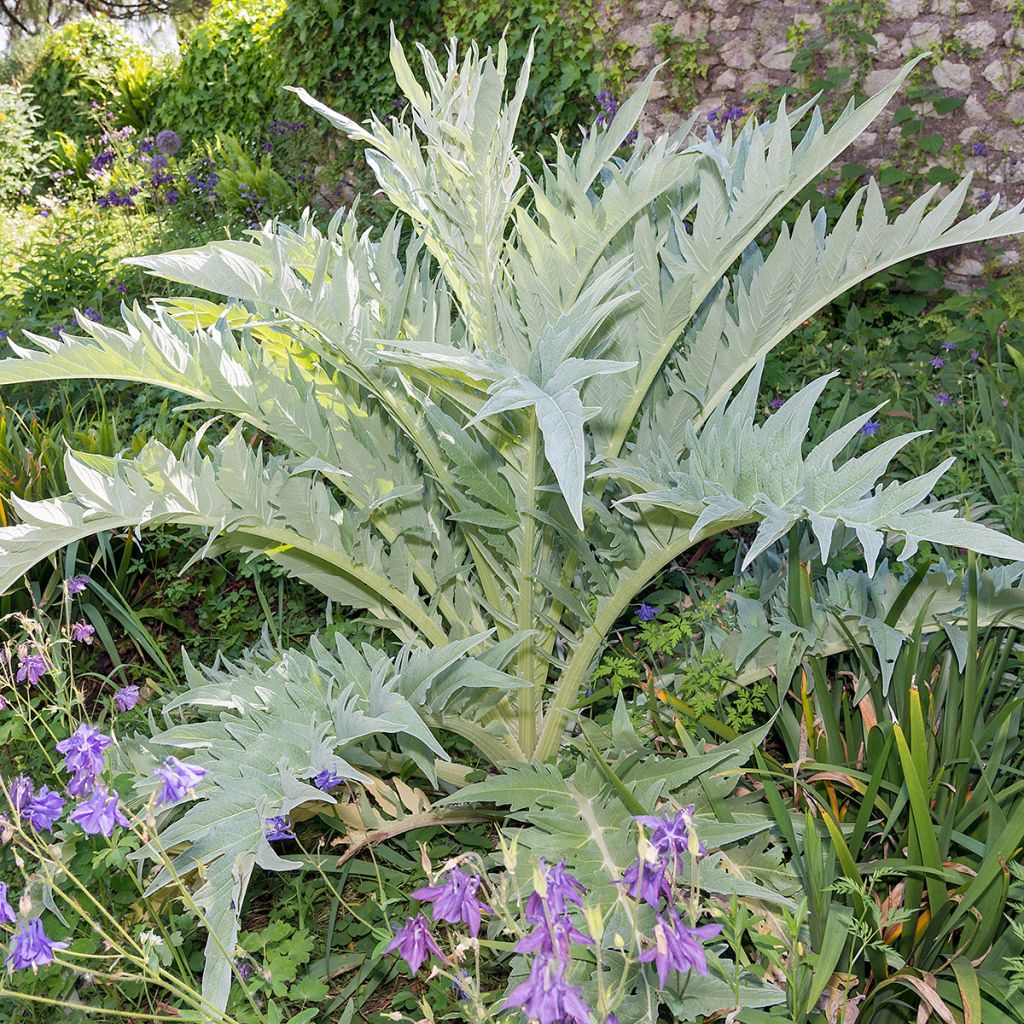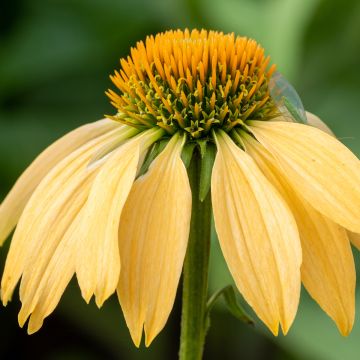

Potted Cynara cardunculus - Cardoon


Potted Cynara cardunculus - Cardoon


Potted Cynara cardunculus - Cardoon


Potted Cynara cardunculus - Cardoon


Potted Cynara cardunculus - Cardoon


Potted Cynara cardunculus - Cardoon


Potted Cynara cardunculus - Cardoon
Potted Cynara cardunculus - Cardoon
Cynara cardunculus var. altilis
Cardoon, Artichoke Thistle
Pots placed in a large cardboard box, without any protection or packaging.... The seedlings were wandering around in the compost outside the pots! I was used to more professionalism.
Jf Goulian , 19/12/2025
Special offer!
Receive a €20 voucher for any order over €90 (excluding delivery costs, credit notes, and plastic-free options)!
1- Add your favorite plants to your cart.
2- Once you have reached €90, confirm your order (you can even choose the delivery date!).
3- As soon as your order is shipped, you will receive an email containing your voucher code, valid for 3 months (90 days).
Your voucher is unique and can only be used once, for any order with a minimum value of €20, excluding delivery costs.
Can be combined with other current offers, non-divisible and non-refundable.
Home or relay delivery (depending on size and destination)
Schedule delivery date,
and select date in basket
This plant carries a 12 months recovery warranty
More information
We guarantee the quality of our plants for a full growing cycle, and will replace at our expense any plant that fails to recover under normal climatic and planting conditions.

Would this plant suit my garden?
Set up your Plantfit profile →
Description
The Cardoon, in Latin Cynara cardunculus, is a regular in old vegetable gardens where it is grown for its fleshy, edible and tasty leaves. It is also a remarkable ornamental plant, not often considered to add volume and a touch of prestige to a large bed of perennials or even bushes. Its superb artichoke-like flowers, of a bright violet-blue, emerge in early summer from an imposing shrub of large, grey-silver, dissected, undulate and patterned leaves, occupying a good square metre. Each plant, a true work of art, is a decoration. More often biennial than perennial, the cardoon perpetuates itself abundantly through spontaneous sowing.
The cultivated cardoon, Cynara cardunculus var.altilis (Synonym C.cardunculuc subsp cardunculus), is a cousin of the artichoke, also called Cynara cardunculus var. scolymus, whose floral buds we consume. It is a plant of the aster family, native to the Mediterranean basin. It is found in Portugal, Spain, Italy, Greece and North Africa. In France, it is present in Gard, Hérault, Aude, Pyrénées-Orientales and Corsica. In these regions, the wild form grows spontaneously on arid slopes and along paths.
The cultivated form is a biennial or short-lived perennial plant. In the first year, it develops a clump of leaves with a wide and spreading habit that persists in winter. Each leaf can measure up to 60 cm (24in) in length and 30 cm (12in) in width. Their thick and undulate lamina, silver on the upper side and covered with a grey-white down on the underside, is deeply divided into many tapered segments at their tips. The long petiole, which extends into the main vein of each leaf, is wide and fleshy.
The flowering occurs in the second year, usually in June-July, depending on the climate. From the centre of the clump of leaves emerge tall, ramified stems, which can rise up to 1.50 m (5ft) or 2 m (7ft) from the ground. Each branching carries a large 5 cm (2in) diameter flower head composed of numerous mauve florets enclosed in a globose, scale-like, fleshy receptacle. The nectar-rich flowering gives way to seeds appreciated by birds. They will easily germinate in loose soil and produce a beautiful plant ready to bloom in 2 to 3 years.
Plant the cardoon in isolation or at the back of a bed of lower perennials, where its size, habit and colour will work wonders. The cardoon is undoubtedly architectural and deserves more than a place in the vegetable garden. It is a plant of architecture and contrast, whose extraordinarily bright foliage enhances all its neighbours, from roses to chrysanthemums and daylilies, from royal lilies to large daisies, from lush grasses to kniphofias, without overshadowing their simple or more sophisticated beauty. This plant is not lacking in originality and is also easy to cultivate in the sun in any good garden soil. Its flowers are used in dried bouquets. They resemble thistle flowers, from which this plant takes its name in Provençal (Cardo).
Report an error about the product description
Potted Cynara cardunculus - Cardoon in pictures






Flowering
Foliage
Plant habit
Botanical data
Cynara
cardunculus
var. altilis
Asteraceae
Cardoon, Artichoke Thistle
Mediterranean
Planting and care
Plant your Cynara cardunculus in a sunny location after the end of the last frost in rich soil that has been deeply worked and enriched with organic fertiliser. It tolerates the presence of limestone and clay in the soil. It prefers moist soils, but it is quite water-wise: a good watering once a week will improve its appearance and flowering. It can withstand short frosts of at least -7°C (19.4°F). In cooler climates, it is recommended to mulch in winter to protect this Mediterranean plant from severe cold. Protect it from strong winds and give it space: under good growing conditions, it can reach a height of 1.5m (5ft) and almost the same width. To promote its spread, you can cut the flowers before they bloom, thus extending the lifespan of your cardoon. You can harvest the leaves in summer and autumn after blanching them by wrapping them in a cloth or paper for 3 weeks.
Planting period
Intended location
Care
-
, onOrder confirmed
Reply from on Promesse de fleurs
Similar products
Haven't found what you were looking for?
Hardiness is the lowest winter temperature a plant can endure without suffering serious damage or even dying. However, hardiness is affected by location (a sheltered area, such as a patio), protection (winter cover) and soil type (hardiness is improved by well-drained soil).

Photo Sharing Terms & Conditions
In order to encourage gardeners to interact and share their experiences, Promesse de fleurs offers various media enabling content to be uploaded onto its Site - in particular via the ‘Photo sharing’ module.
The User agrees to refrain from:
- Posting any content that is illegal, prejudicial, insulting, racist, inciteful to hatred, revisionist, contrary to public decency, that infringes on privacy or on the privacy rights of third parties, in particular the publicity rights of persons and goods, intellectual property rights, or the right to privacy.
- Submitting content on behalf of a third party;
- Impersonate the identity of a third party and/or publish any personal information about a third party;
In general, the User undertakes to refrain from any unethical behaviour.
All Content (in particular text, comments, files, images, photos, videos, creative works, etc.), which may be subject to property or intellectual property rights, image or other private rights, shall remain the property of the User, subject to the limited rights granted by the terms of the licence granted by Promesse de fleurs as stated below. Users are at liberty to publish or not to publish such Content on the Site, notably via the ‘Photo Sharing’ facility, and accept that this Content shall be made public and freely accessible, notably on the Internet.
Users further acknowledge, undertake to have ,and guarantee that they hold all necessary rights and permissions to publish such material on the Site, in particular with regard to the legislation in force pertaining to any privacy, property, intellectual property, image, or contractual rights, or rights of any other nature. By publishing such Content on the Site, Users acknowledge accepting full liability as publishers of the Content within the meaning of the law, and grant Promesse de fleurs, free of charge, an inclusive, worldwide licence for the said Content for the entire duration of its publication, including all reproduction, representation, up/downloading, displaying, performing, transmission, and storage rights.
Users also grant permission for their name to be linked to the Content and accept that this link may not always be made available.
By engaging in posting material, Users consent to their Content becoming automatically accessible on the Internet, in particular on other sites and/or blogs and/or web pages of the Promesse de fleurs site, including in particular social pages and the Promesse de fleurs catalogue.
Users may secure the removal of entrusted content free of charge by issuing a simple request via our contact form.
The flowering period indicated on our website applies to countries and regions located in USDA zone 8 (France, the United Kingdom, Ireland, the Netherlands, etc.)
It will vary according to where you live:
- In zones 9 to 10 (Italy, Spain, Greece, etc.), flowering will occur about 2 to 4 weeks earlier.
- In zones 6 to 7 (Germany, Poland, Slovenia, and lower mountainous regions), flowering will be delayed by 2 to 3 weeks.
- In zone 5 (Central Europe, Scandinavia), blooming will be delayed by 3 to 5 weeks.
In temperate climates, pruning of spring-flowering shrubs (forsythia, spireas, etc.) should be done just after flowering.
Pruning of summer-flowering shrubs (Indian Lilac, Perovskia, etc.) can be done in winter or spring.
In cold regions as well as with frost-sensitive plants, avoid pruning too early when severe frosts may still occur.
The planting period indicated on our website applies to countries and regions located in USDA zone 8 (France, United Kingdom, Ireland, Netherlands).
It will vary according to where you live:
- In Mediterranean zones (Marseille, Madrid, Milan, etc.), autumn and winter are the best planting periods.
- In continental zones (Strasbourg, Munich, Vienna, etc.), delay planting by 2 to 3 weeks in spring and bring it forward by 2 to 4 weeks in autumn.
- In mountainous regions (the Alps, Pyrenees, Carpathians, etc.), it is best to plant in late spring (May-June) or late summer (August-September).
The harvesting period indicated on our website applies to countries and regions in USDA zone 8 (France, England, Ireland, the Netherlands).
In colder areas (Scandinavia, Poland, Austria...) fruit and vegetable harvests are likely to be delayed by 3-4 weeks.
In warmer areas (Italy, Spain, Greece, etc.), harvesting will probably take place earlier, depending on weather conditions.
The sowing periods indicated on our website apply to countries and regions within USDA Zone 8 (France, UK, Ireland, Netherlands).
In colder areas (Scandinavia, Poland, Austria...), delay any outdoor sowing by 3-4 weeks, or sow under glass.
In warmer climes (Italy, Spain, Greece, etc.), bring outdoor sowing forward by a few weeks.









































